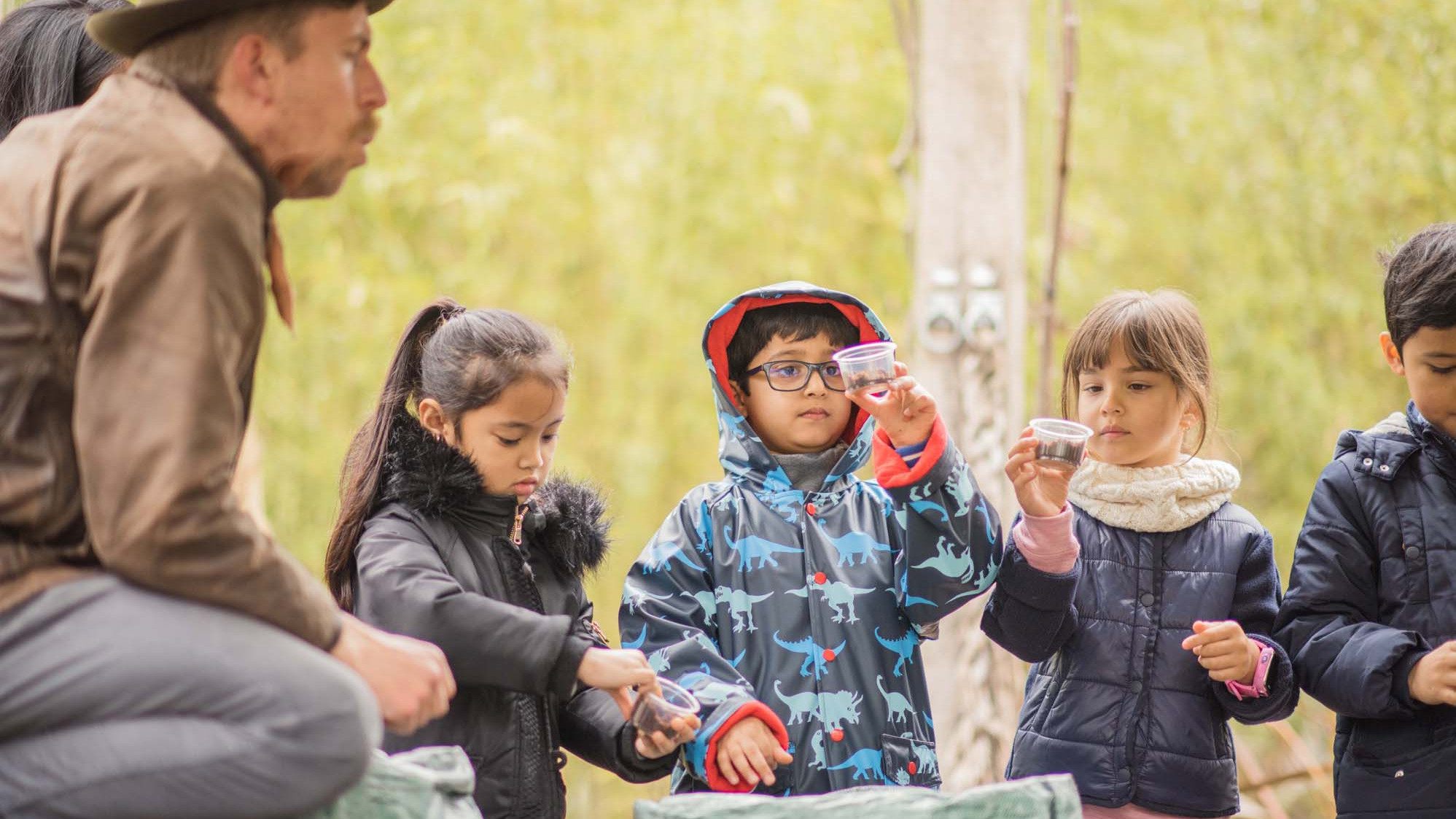Habitats
Students will explore the exciting range of habitats at Chelsea Physic Garden, including our pond and log pile. They will learn how to identify a variety of plant and animal species and discover how different species have become well suited to unique habitats. Students will also explore the principle of simple food webs.
Approximate Half-Day Schedule
Introduction to Chelsea Physic Garden, plants and food chains. Students, identifying as different animals, will make their own food web.
In small groups facilitated by the CPG Learning Team and school teachers, children will discover the numerous plants and animals living in different habitats within the garden. Students will study and identify pond life, make a botanical piece of art and create a food web.
Students will return to the classroom and feedback on the plants and animals they discovered and where they think these species belong in the food web. Students will think about what might happen if a cornerstone species is lost from the food chain.
National Curriculum Links (NCL)
identify that animals, including humans, need the right types and amount of nutrition, and that they cannot make their own food; they get nutrition from what they eat (Science – Year 3)
recognise that environments can change and that this can sometimes pose dangers to living things (Science – Year 4)
construct and interpret a variety of food chains, identifying producers, predators and prey (Science – Year 4)
to use to develop and share their ideas, experiences and imagination (Art – KS1)
Pre-visit Ideas
Introduce Botanical Gardens, https://www.kew.org/read-and-watch/what-is-a-botanic-garden, and Chelsea Physic Garden, to your students https://www.youtube.com/watch?v=9FkiXPZUiw8
Instruct students to bring in the packaging of an item which is derived from a plant (this could be food, clothes or any other plant based items). From the range of products produced talk to students about the importance of plants. Bring this packaging to the garden as students will upcycle it by turning it into a planter
Learn about the parts of a flower and their functions. The plant reproduction booklets created by Science and Plants in Schools offer free lesson plans and resources which can be found here https://www.saps.org.uk/attachments/article/1374/SAPS%20book%202%20-%20Reproduction%20and%20life%20cycles%20-%20Pt%201%20-%202016.pdf and here https://www.saps.org.uk/attachments/article/1375/SAPS%20book%203%20-%20Reproduction%20and%20life%20cycles%20-%20Pt%202%20-%202016.pdf
Watch some of the amazing TedEd videos about plants and complete their online lessons.
Post-visit Ideas
Complete the Habitats revision questionnaire (These questionnaires are designed so students both revise the topics covered and provide feedback on the activities themselves)
Complete one of the climate change lessons offered by the WWF https://www.wwf.org.uk/get-involved/schools/school-campaigns/shaping-our-future
Students could teach a class assembly on climate change.
Complete UNICEFs and UNESCOs world’s largest lesson on making space for nature, http://cdn.worldslargestlesson.globalgoals.org/2019/07/Make-Space-For-Nature-Lesson-Plan.pdf
Sign your school up for the Eco-Schools Green Flag Award https://www.eco-schools.org.uk/about/howitworks/the-awards/.
“In 2017 we have been lucky enough to have received £86,300 over three years from the City of London Corporation’s charitable funder, City Bridge Trust.”

